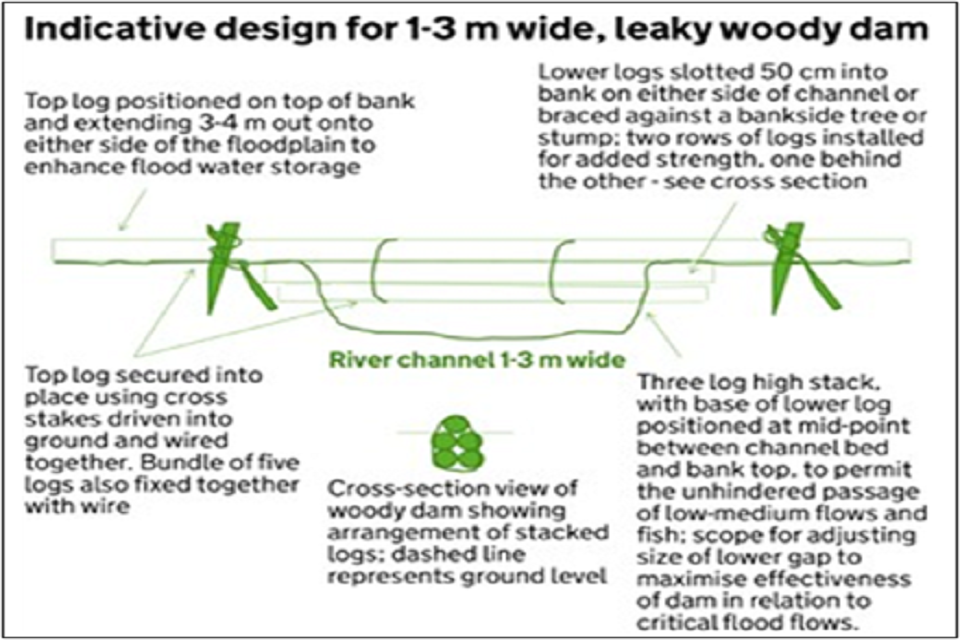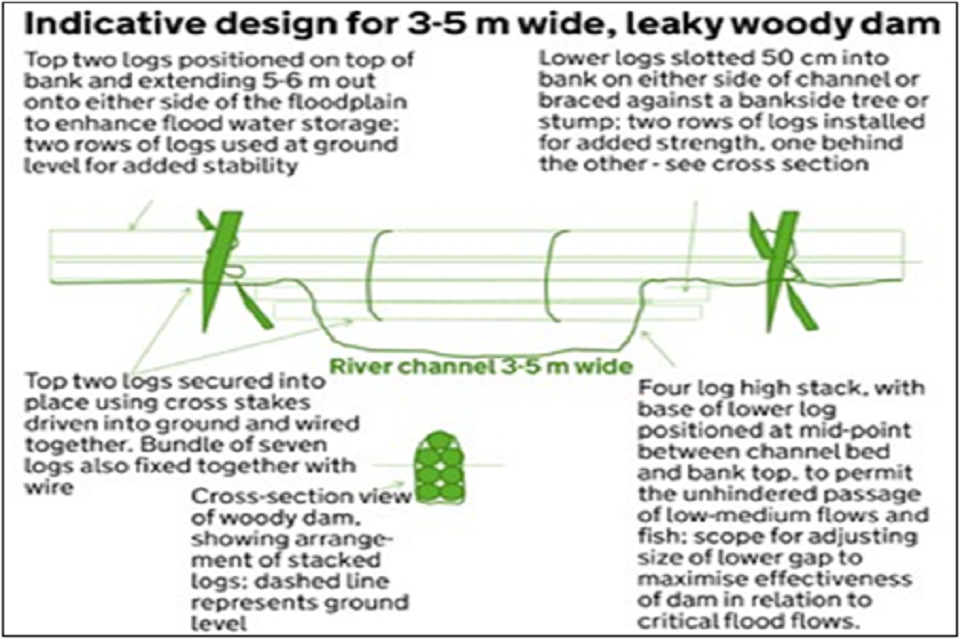Annex 2c: Indicative designs for leaky woody dams
Published 25 February 2021
Applies to England
Examples of a small and a large leaky woody dam.
Small leaky woody dam (RP32): 1m to 2.99m wide
Indicative design for 1 to 3 metres wide, leaky woody dam
- A cross section view of a 3 log high woody dam shows the arrangement of the stacked logs – 2 logs at the base with another 2 logs directly on top of them. The final log is at the top of the log stack, positioned in the dip between the 2 logs below it. Ground level is shown as being between the second row of logs from the bottom and the top log.
- The base of the lower logs is positioned at mid-point between the channel bed and bank top, to permit the unhindered passage of low-medium flows and fish. There is scope for adjusting the size of the lower gap to maximise the effectiveness of the dam in relation to critical flood flows.
- The lower logs are slotted 50cm into the bank on either side of the channel or braced against a bankside tree or stump. There are 2 rows of logs installed for added strength, one behind the other.
- The top log is positioned on top of bank and extends 3 to 4 metres out onto either side of the floodplain to enhance flood water storage
- The top log is secured into place using cross stakes driven into the ground and wired together. Bundle of 5 logs also fixed together with wire.

Large leaky woody dam (RP33) – 3m to 5m wide
Indicative design for 3 to 5 metres wide, leaky woody dam
- A cross section view of a 4 log high woody dam shows the arrangement of the stacked logs – 2 logs at the base with another 2 logs directly on top of them, then another 2 logs directly on top of those. The final log is at the top of the log stack, positioned in the dip between the 2 logs below it. Ground level is shown as being between the second and third row of logs from the bottom.
- The base of the lower logs is positioned at mid-point between the channel bed and bank top, to permit the unhindered passage of low-medium flows and fish. There is scope for adjusting the size of the lower gap to maximise the effectiveness of the dam in relation to critical flood flows.
- The lower logs are slotted 50cm into the bank on either side of the channel or braced against a bankside tree or stump. There are 2 rows of logs installed for added strength, one behind the other.
- The top 2 logs are positioned on top of bank and extend 5 to 6 metres out onto either side of the floodplain to enhance flood water storage. There are 2 rows of logs used at ground level for added stability.
- The top 2 logs are secured into place using cross stakes driven into the ground and wired together. Bundle of 7 logs also fixed together with wire.

